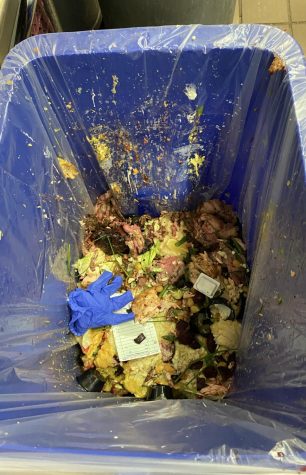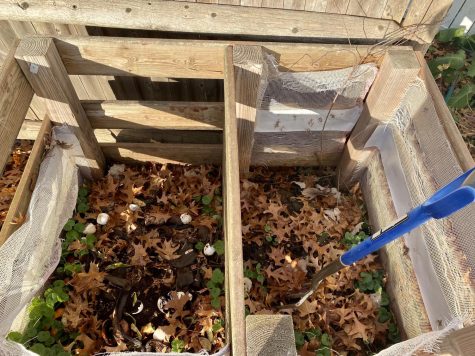Food Waste Is Not in Good Taste
Around the holidays, much attention is given to food scarcity, but another topic arising is food waste. According to the USDA, Americans are not utilizing nearly 40% of all food produced. This is causing issues as wide-ranging as climate change to food insecurity.
The USDA defines food waste as any “edible amount of food, postharvest, that is available for human consumption but is not consumed for any reason.”
There are a plethora of reasons as to why food is being wasted. First, is a lack of knowledge behind the meanings of “use by” and expiration dates. The USDA says that, “‘Use-by’ date is the last date recommended for the use of the product while at peak quality. It is not a safety date.” Leanne Nolan, Hall High

School’s AP Environmental teacher suggests smelling your food to ensure that it is still good and so that good food doesn’t go to waste.
Secondly, restaurants are large contributors to food waste. Food Print estimates that restaurants in the US generate 22 to 23 billion pounds of waste annually. This occurs from the large portion sizes, extensive menus, improper ingredient storage and over-preparation of food. Due to government regulations, restaurants are prohibited from donating any leftover food due to liability issues.
One of the largest drivers of food waste is the food production itself. As food gets from farm to table, the USDA reports problems “during drying, miling, transporting or processing that expose food to damage by insects, rodents, birds, mold and bacteria. This wastes resources of all kinds from labor to non-renewable resources.
However, food waste can be reversed. While shopping at a grocery store, keep to a list, carry a smaller basket, and only buy what you need. At a more personal level, individuals can compost. Options range from countertop composts, companies such as blue diamond who will come pick up your scraps, to bins outdoors which will reduce methane emissions and divert food scraps from the landfill. Composts are versatile and will break down a plethora of foods from fruits to coffee. Throughout the process, the food breaks down, producing nutrient-rich soil, ideal for producing nutrient-dense food.

Next is to support companies and grocery stores that care more about profit than waste. Wade Bassock, Hall High Schools environmental club president said that during his time volunteering at Food share, “a lot of the produce came from warehouses just filled with produce grocery stores didn’t want.” As a business, grocery stores need to ensure they are selling their best products. This means any food with blemishes gets thrown away or sent to warehouses, even though they are still good and edible. Diverting this waste to people in need would produce a solution to food waste and food insecurity; food insecurity being the “lack of consistent access to enough food for an active, healthy lifestyle”, as defined by Feeding America.
In the end, it really comes down to regulation. Companies, restaurants, and grocery stores are, for the most part, prohibited from donating their leftover food for the day, meaning that all food needs to be thrown away. This gives companies no option to donate it to food shelters. Lobbying new and improved regulations would drastically decrease the amount of food wasted and supply food insecure individuals with food.
Feeding America reports that “the pandemic has increased food insecurity among families.” And currently, the USDA estimates 10.5 percent of the US population to be food insecure. With the amount of food being wasted, and during the holidays, food insecurity is bound to increase if action is not taken.





